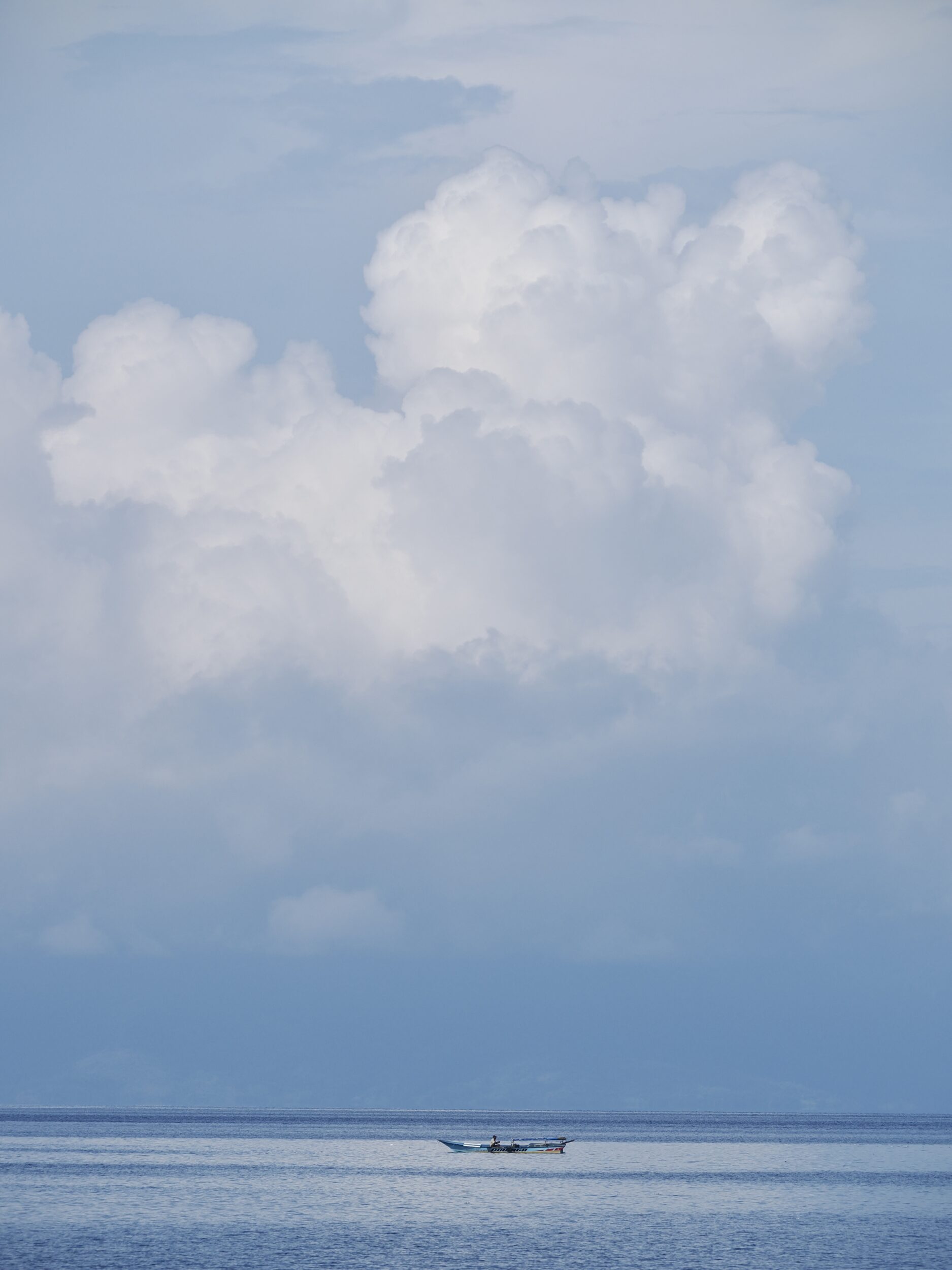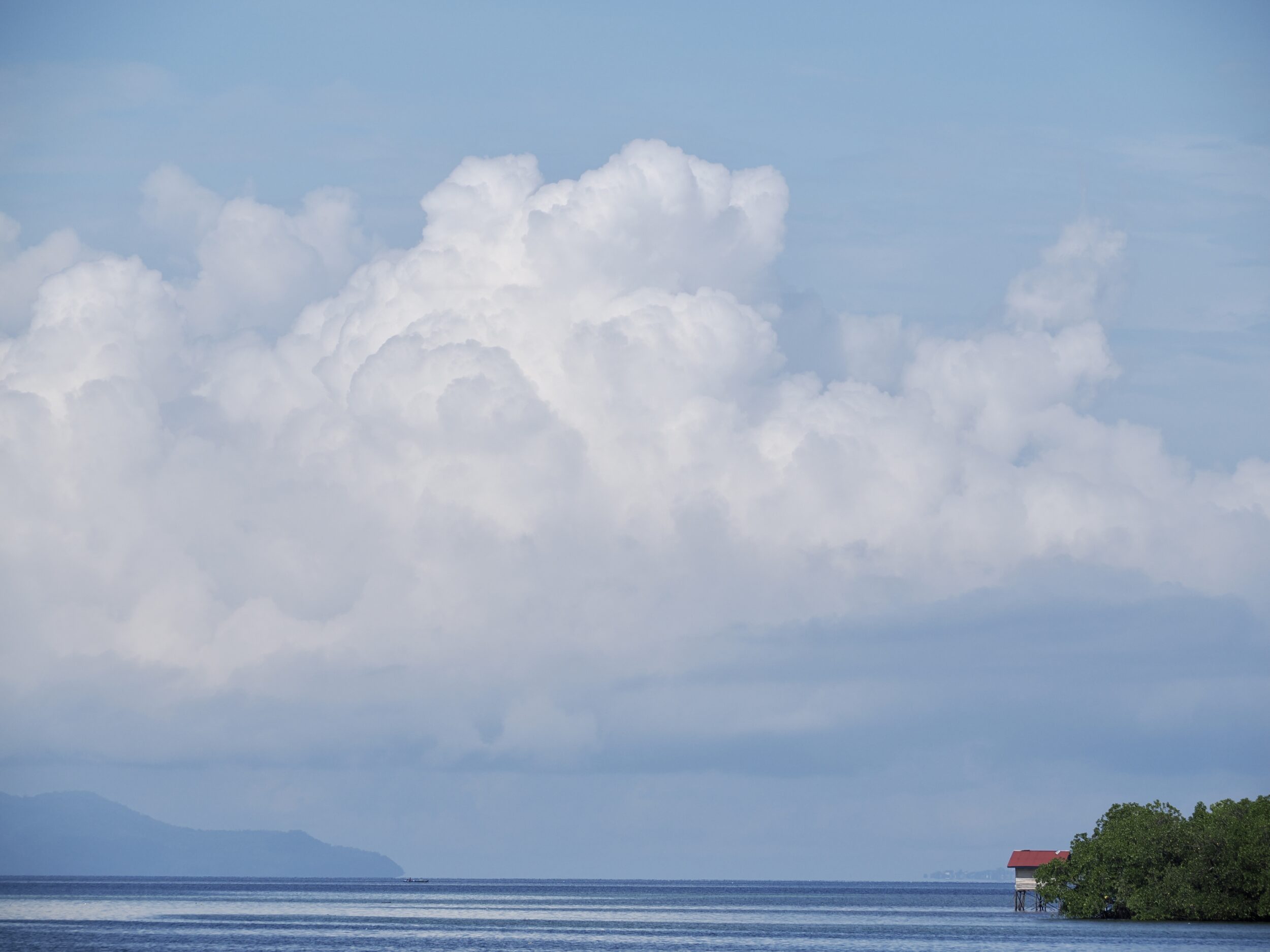Only India, China and the United States are home to more humans than is Indonesia.
The north easternmost islands of the Indonesian archipelago – those east of Sulawesi – are huge in number, but most are small isles and islets…”invisible” on most maps.
Collectively, they account for a miniscule portion of Indonesia’s human population, which now exceeds 283 million.
The islands and waters of North Maluku, Maluku, and Raja Ampat are extraordinarily biodiverse, species-rich, and scenically splendid; this is a region of rainforests, reefs, karsts, astonishing marine life, birds of paradise, incredible cloudscapes…and surprisingly few humans.

For reasons that will be divulged later (in multi-image, detailed posts) when I took this post’s photos we – and quite a few others, including The United Kingdom’s Ambassador to Indonesia – were about to head to a modest village on Halmahera.
In the history of human knowledge acquisition, the relevant village is globally significant.
I am at least 99 percent certain that you, dear reader, have never heard of it! (as was also true of yours truly, just a few moons ago)
Halmahera is – by far – the biggest island in Indonesia’s “wild northeast”; its land surface is a great many times larger than that of the nearby Ternate & Tidore islands, combined.
However, Halmahera’s total number of resident humans exceeds those two “pinprick” islands’ combined total by very much less than 200 percent.
